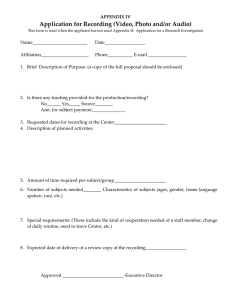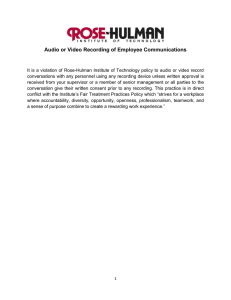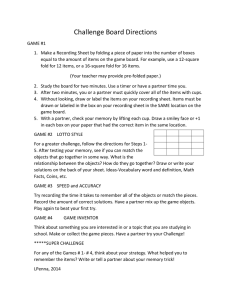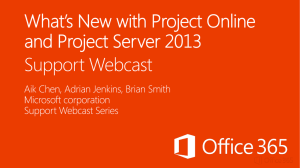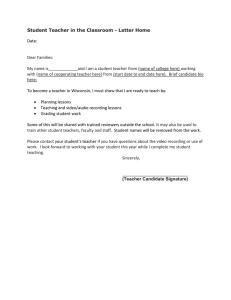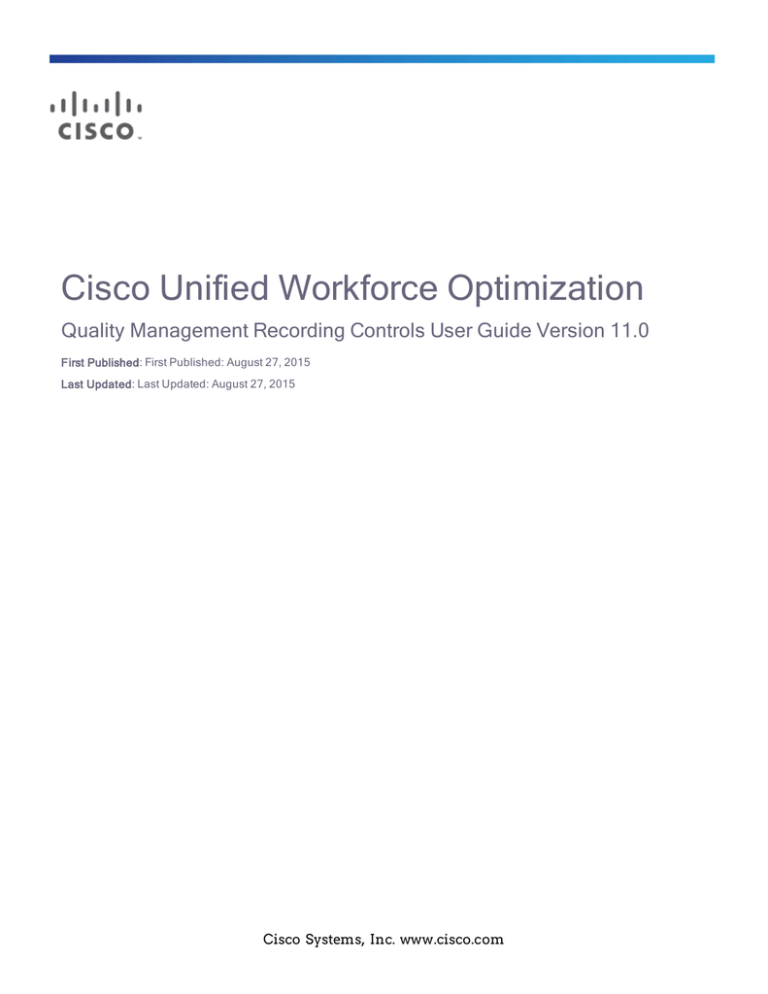
Cisco Unified Workforce Optimization
Quality Management Recording Controls User Guide Version 11.0
First Published: First Published: August 27, 2015
Last Updated: Last Updated: August 27, 2015
Cisco Systems, Inc. www.cisco.com
THE SPECIFICATIONS AND INFORMATION REGARDING THE PRODUCTS IN THIS MANUAL
ARE SUBJECT TO CHANGE WITHOUT NOTICE. ALL STATEMENTS, INFORMATION, AND
RECOMMENDATIONS IN THIS MANUAL ARE BELIEVED TO BE ACCURATE BUT ARE
PRESENTED WITHOUT WARRANTY OF ANY KIND, EXPRESS OR IMPLIED. USERS MUST TAKE
FULL RESPONSIBILITY FOR THEIR APPLICATION OF ANY PRODUCTS.
THE SOFTWARE LICENSE AND LIMITED WARRANTY FOR THE ACCOMPANYING PRODUCT
ARE SET FORTH IN THE INFORMATION PACKET THAT SHIPPED WITH THE PRODUCT AND
ARE INCORPORATED HEREIN BY THIS REFERENCE. IF YOU ARE UNABLE TO LOCATE THE
SOFTWARE LICENSE OR LIMITED WARRANTY, CONTACT YOUR CISCO REPRESENTATIVE
FOR A COPY.
The Cisco implementation of TCP header compression is an adaptation of a program developed
by the University of California, Berkeley (UCB) as part of UCB's public domain version of the UNIX
operating system. All rights reserved. Copyright © 1981, Regents of the University of California.
NOTWITHSTANDING ANY OTHER WARRANTY HEREIN, ALL DOCUMENT FILES AND
SOFTWARE OF THESE SUPPLIERS ARE PROVIDED “AS IS" WITH ALL FAULTS. CISCO AND THE
ABOVE-NAMED SUPPLIERS DISCLAIM ALL WARRANTIES, EXPRESSED OR IMPLIED,
INCLUDING, WITHOUT LIMITATION, THOSE OF MERCHANTABILITY, FITNESS FOR A
PARTICULAR PURPOSE AND NONINFRINGEMENT OR ARISING FROM A COURSE OF DEALING,
USAGE, OR TRADE PRACTICE. IN NO EVENT SHALL CISCO OR ITS SUPPLIERS BE LIABLE FOR
ANY INDIRECT, SPECIAL, CONSEQUENTIAL, OR INCIDENTAL DAMAGES, INCLUDING,
WITHOUT LIMITATION, LOST PROFITS OR LOSS OR DAMAGE TO DATA ARISING OUT OF THE
USE OR INABILITY TO USE THIS MANUAL, EVEN IF CISCO OR ITS SUPPLIERS HAVE BEEN
ADVISED OF THE POSSIBILITY OF SUCH DAMAGES.
Any Internet Protocol (IP) addresses and phone numbers used in this document are not intended
to be actual addresses and phone numbers. Any examples, command display output, network
topology diagrams, and other figures included in the document are shown for illustrative
purposes only. Any use of actual IP addresses or phone numbers in illustrative content is
unintentional and coincidental.
Cisco and the Cisco logo are trademarks or registered trademarks of Cisco and/or its affiliates in
the U.S. and other countries. To view a list of Cisco trademarks, go to this URL:
www.cisco.com/go/trademarks. Third-party trademarks mentioned are the property of their
respective owners. The use of the word partner does not imply a partnership relationship
between Cisco and any other company. (1110R)
Quality Management Recording Controls User Guide
© 2015 Cisco Systems, Inc. All rights reserved.
Contents
Introduction
4
Recording Controls User Applications
6
Recording Controls IP Phone Service
7
Accessing the Recording Controls IP Phone Service
7
Recording Controls Commands
8
Recording Controls Browser Application
11
Accessing the Recording Controls Browser Application
13
Sending Metadata Commands
14
Recording Commands
14
Command Functions
15
Effects of Issuing Recording Control Commands
28
Active and Last Call
29
Using Commands with an Outbound Dialer
30
Removing Recording Controls
31
Introduction
Cisco Unified Workforce Optimization Quality Management allows you to
record, store, score, and review agent calls in a contact center. The system
administrator configures how to control the recording of calls. The workflows
decide which recorded calls to store in the system for archive or review.
Because there are always special cases that you cannot anticipate or handle by
creating a simple quality management workflow, Quality Management
(Recording Controls) software provides commands that you can use to override
the business logic found in the quality management workflows. The Recording
Controls software allows you to control which recorded calls are stored, the
content of the recorded calls, and even the data associated with the calls. This is
sometimes called “record on demand”, but the Recording Controls software
allows you to do more than force the recording and storage of a call. Recording
Controls allows you to:
n
Tag an active call or the most recent call recording
n
Record calls
n
Pause and resume the recording of audio
n
Restart or start the recording of a call
n
Discard previously recorded audio and screen for a call and restart a new
recording
n
Delete the recording for the active call—once a call is over you cannot
delete the recording
n
Login or logout for hot desk recording
n
Add metadata to an active call or the most recent call
Quality Management software includes the following user applications:
n
Recording Controls IP Phone service
n
Recording Controls Browser application
This guide describes how to use these user applications. For information on
installing and configuring Recording Controls refer to the Quality Management
API Programmer Guide.
4
Introduction
For additional information on logs and debugging, see the Quality
Management Troubleshooting Guide.
5
Recording Controls User Applications
There are two Recording Controls user applications that offer the same
functionality but run on different platforms.
The two user applications are as follows:
n
Recording Controls IP Phone Service
Note: This feature is only available on Cisco IP phones.
n
Recording Controls Browser Application
Supported recording types include:
n
n
Agent Recording:
l
Desktop Recording
l
Network Recording
l
Server Recording (SPAN)
Gateway/MediaSense Recording:
l
Acme Packet Gateway Recording
l
Cisco CUBE Recording via SIP
l
Cisco MediaSense Recording
Note: The following recording commands are supported with
Gateway/MediaSense Recording: Record Tag, Pause, Resume, Delete,
and Metadata.
Note: For Gateway/MediaSense Recording, the use of recording
commands is not supported for extensions in the exclusion list.
6
Recording Controls User Applications
Recording Controls IP Phone Service
The Recording Controls IP Phone Service is an IP phone service application
available on a hard or soft IP phone. Any Quality Management users (agents or
knowledge workers) who are configured for Desktop Recording, Network
Recording, or Server Recording (SPAN) on their supported hard or soft IP
phone can use the Recording Controls IP Phone Service. The Recording
Controls IP Phone Service only sends recording commands to the configured
Quality Management Recording Cluster.
Accessing the Recording Controls IP Phone Service
1. From your Cisco IP phone or Cisco IP Communicator soft phone, press
the Services button.
The Services menu appears.
2. Select the IP phone service for the Recording Controls.
In this example, the name of Recording Controls IP Phone Service
application is Recording Control.
The Cisco Recording Controls base screen appears.
7
Recording Controls User Applications
3. Press the button for the command you want to use.
To see additional commands, press the More button.
The base screen displays additional recording control commands.
Recording Controls Commands
The Recording Controls base screen is the launching pad for recording control
commands. The recording control commands appear at the bottom of the
screen. To see additional commands, press the More button.
The Recording Controls commands are simple one-button commands. When
you press a command button, it sends the command to the configured Network
Recording service for processing. Because the Network Recording service does
not reply to these commands with success or failure messages, the Recording
Controls application cannot report this information to you. The Recording
Controls application can only report whether the command was sent
successfully or not. This information appears on the Command results screen.
The previous figure indicates that the Recording Controls successfully sent the
pause command. If Recording Controls could not send the command, an error
message appears. If Recording Controls could not send the command, try
sending the command again. If the command fails again, there might be a
8
Recording Controls User Applications
networking or configuration issue that is preventing the Recording Controls
application from sending the command. You must correct the problem to
resolve the issue before the Recording Controls application can work properly.
The Metadata button initiates the Add Metadata command. This differs from the
other recording control commands because it requires additional information.
You must select the defined metadata field you want to attach to the call
recording, and then assign a value to the field.
When you press the Metadata button, the Metadata menu screen appears.
The metadata fields that appear in the menu are defined in Monitoring and
Recording Administrator. Up to ten metadata fields can be defined in Quality
Management.
Use the Up and Down buttons to scroll up and down the list to see all defined
metadata fields. Select a metadata item and highlight it, and then press the
Select button, or press the number button on the IP phone keypad that matches
the menu item number shown on the screen.
When you have selected a metadata item, the Recording Controls IP Phone
Service Metadata value screen appears. This screen displays the name of the
selected metadata item and provides an interface for you to input a value for the
selected item.
9
Recording Controls User Applications
Use the IP phone keypad to enter numbers and letters in the Value field. Then
press Submit.
Each metadata value is associated with a metadata type. The metadata type
determines the type of characters you can enter in the metadata field. The valid
metadata types are text, date, and number. The Monitoring and Recording
administrator assigns the metadata type to the metadata in Monitoring and
Recording Administrator.
If the metadata field is assigned the text metadata type, you can enter
alphanumeric characters from the keypad. To choose a letter or number, press
the key associated with the character repeatedly until the character appears on
the screen.
Example 1: Key 2 allows you to choose from the following characters: a b
c 2 A B C. To select A, press key 2 five times. Repeat for each character
you want to include in the metadata field.
If the metadata field is assigned the date or number metadata type, you can
enter numbers from the keypad.
Example 2: Press key 1 to enter 1 in the metadata field. The * and # keys
provide additional symbols, including the dash/minus symbol and the
decimal point.
Note: The metadata field does not allow the following characters: & < >
10
Recording Controls User Applications
Example 3: The user typed Gold in the value field for metafield1 and
pressed Submit to send the command. The Metadata Results screen
appears with a message.
The Metadata Results screen indicates whether the sent metadata command
succeeded or failed. The message includes the name of the metadata field and
the value entered for the metadata command.
While you accept and make phone calls using a hard or soft IP phone, the
Recording Controls IP Phone Service screen might be replaced with other
screens from the system or other services. In these cases, you can simply press
the Services button again and select the Recording Controls IP Phone Service to
continue sending recording commands.
Press the Exit button to return to the Recording Controls IP Phone Service base
screen.
Press the Services button to exit the Recording Controls IP Phone Service and
return to the phone’s base screen. Press the More button to return to the
Recording Controls base screen.
Note: Some hard IP phones might display the Cancel button instead of the
Exit button. The screen examples in this document use the Cisco IP
Communicator soft phone.
Recording Controls Browser Application
The Recording Controls Browser application is a web-based application. You
can access it from a Windows desktop using Internet Explorer. See the
11
Recording Controls User Applications
Installation Guide for the supported browsers.
The Programmer Guide window is the launching pad for recording control
commands.
The following table lists the command buttons that can appear in the Recording
Controls window.
Label
Icon
Record Tag
Pause
Resume
Restart
Delete
Login
Logout
Metadata
Start Segment
Stop Segment
Start Screen
Stop Screen
12
Recording Controls User Applications
The Start Screen and Stop Screen commands are not displayed by default. They
must be configured to appear by your administrator.
The Metadata Key and Metadata Value fields are associated with the Metadata
button. For more information on how these fields are used, see Sending
Metadata Commands.
The Programmer Guide window also provides a Help ( ) button. Click this Help
button to access the Recording Controls User Guide.
Accessing the Recording Controls Browser Application
1. Enter the following URL in Internet Explorer:
http://<Web Base server>/recordingcontrols
Where <Web Base server> is the IP address or hostname for the Cisco
Quality Management Web Base server.
2. Depending on how your system is configured by your administrator, you
might be prompted to enter your username. This is the same username
you use to log in to Recording and Quality Management.
If there is more than one domain, you also must select the domain from
the Choose Domain drop-down menu.
13
Recording Controls User Applications
The Cisco Recording Controls window appears.
Sending Metadata Commands
1. From the Cisco Recording Controls window, choose a metadata key from
the Metadata Key drop-down list box.
2. Enter a value in the Metadata Value field or leave it blank and then press
the Metadata button.
If the metadata type is text, enter one or more alphanumeric characters.
If the metadata type is date or number, enter an integral number or
calendar date. The valid characters are 0-9, the dash/minus symbols, and
the decimal point used when entering integral numbers.
Note: The Metadata Value field does not allow the following
characters: & < >
Recording Controls sends the metadata command.
Note: Metadata sent after the call is completed might take up to an
hour or more to display in the database.
Recording Commands
This section explains the following concepts:
n
Syntax of recording commands
n
Function of each recording command
14
Recording Controls User Applications
n
Active and last calls
n
Using commands with an outbound dialer
Command Functions
Recording commands allow you to control a recording.
Example: You can use recording commands to record a call, pause the
recording, and attach metadata to a recording.
The following table describes how the recording commands interact with each
other and the Quality Management components.
15
Recording Controls User Applications
Recording commands
Command
Record
Function
Records a call and uploads the call to the Quality Management server
at the end of the day.
The Record command behaves as follows:
n
Agent Recording—marks a call for recording, even if archiving is
not enabled and the call does not meet the workflow criteria.
The Record command overrides both the Don’t Record list and
the workflow classifiers.
n
Gateway/MediaSense Recording—marks a recording as tagged
if archiving is enabled and the call meets the workflow criteria.
The Record overrides the workflow, but does not override an
exclusion list in the Exclusion List window because the root
contact does not know the agent’s identity when recording. See
“Recording Controls Considerations for Gateway Recording” in
the Administrator Guide for more information.
Quality Managementstores agent-tagged calls with the Agent Tagged
reason code, and saves them for the retention time configured in
Monitoring and Recording Administrator.
Agent Recording:
n
The Record command is valid for the active call and the last
call.
n
If Quality Management is not recording the active call, Quality
Management starts recording the call when you invoke the
command and adds the Agent Tagged reason code.
n
If Quality Management is recording two active calls (for
example, an inbound ACD call and an outbound consultation
call), Quality Management tags the call that triggered the
recording to begin.
n
If Quality Management is not recording two active calls (for
example, an inbound ACD call and an outbound consultation
call), Quality Management begins recording the first call sent to
the agent, based on the call start times, and tags the first call
16
Recording Controls User Applications
Command
Function
when you invoke the Record command.
Gateway/MediaSense Recording and Agent Recording:
n
When Quality Management actively recording a call, the Tag
command adds the Agent Tagged reason code to the data associated with the call.
n
When Quality Management is not actively recording a call, the
Tag command changes the reason code associated with the
last recorded call to the Agent Tagged reason.
n
If Quality Management did not record the last call, nothing happens. Quality Management cannot update the reason code
when no recording is available.
17
Recording Controls User Applications
Command
Pause
Function
Temporarily halts the recording of:
n
Audio—the audio recording is silent for the duration of the pause
in the final recording where an agent discussed sensitive information.
n
Screen—the screen recording displays the following message
for the duration of the pause in the final recording where an
agent typed sensitive information on the screen.
Screen recording paused
When you cannot record sensitive information (such as Social
Security numbers) for security or liability reasons, use the Pause
command. The Pause command allows you to omit sensitive
information from the final recording. This command adheres to the
Payment Card Industry Data Security Standard (PCI DSS) for
protecting consumer data.
Calls are available for playback prior to reconciliation with silence
where an agent used the Pause command. These calls are accessible
by anyone with the archive user role.
When using the Pause command, note the following:
n
Agent Recording:
l
The pause command is valid for active calls only.
l
If you send a pause command for a call currently in the
paused state, the pause command has no effect.
l
n
The pause command does not affect live monitoring.
Gateway/MediaSense Recording delays the pause. The pause
will appear in the recording after the recording is uploaded.
Issue the Resume command when you want to start recording after a
pause.
18
Recording Controls User Applications
Command
Resume
Function
Resumes recording after you issued a Pause command to stop the
recording.
Agent Recording:
n
The Resume command affects voice and screen recording.
n
If the call is not currently paused, the Resume command has
no effect.
n
The Resume command is valid for active calls only.
n
If you do not use the Resume command, the point at which you
paused the recording is the end of the audio recording.
n
A Resume command does not appear as a mutual silence
event or talkover event during post-call processing.
19
Recording Controls User Applications
Command
Restart
Function
Restarts or starts the recording of a call.
Note: The Restart command is not supported with Gateway
Recording and will be removed in a future release.
Agent Recording:
l
If Quality Management is currently recording an active call, the
Restart command stops the audio and screen recording,
deletes that recording, and restarts recording the call from the
point when you issued the Restart command.
l
If Quality Management s not currently recording an active call,
the Restart command starts audio and screen recording.
l
The Restart command is valid for active calls only.
l
Quality Management assigns an Agent Tagged reason code to
calls recorded using the Restart command. Quality
Management saves the agent tagged calls even if archiving is
not enabled and the call does not meet workflow criteria.
Gateway/MediaSense Recording does not support the Restart
command.
Use this command if you call someone and you are immediately
placed on hold for a long time. Issue the Restart command you leave
the hold queue and begin speaking to a person. This eliminates the
period when you are on hold (for example, 20 minutes of recorded onhold music).
20
Recording Controls User Applications
Command
Delete
Function
Marks a recording for deletion, even if archiving is enabled, the call
meets workflow criteria, the extension is in the inclusion list, or it is
tagged for retention. The Delete command deletes the recorded files
and any metadata, and uploads the basic contact data to Quality Management to maintain accurate call counts.
n
The Delete command is valid for the active call only.
n
The Delete command has precedence over all other
commands.
n
Once you delete a call you cannot record it by issuing the
Record command.
n
Deleted calls are not available for archive purposes or quality
management purposes.
n
You cannot view deleted calls in Cisco Unified Workforce
Optimization.
n
For Gateway/MediaSense Recording, the recording is deleted
for the person who sends the command, but the audio recording
might continue to exist in the root call or in other calls
associated with this call.
Login
Sends a login request that associates an agent with the specific extension for hot desking.
The Recording Controls IP Phone Service does not have login/logout
capabilities. Use Cisco’s Extension Mobility IP Phone application to
log in by phone.
This command is not supported if you are using Gateway/MediaSense
Recording.
Logout
Sends a logout request that associates an agent with the specific
extension for hot desking.
This command is not supported if you are using Gateway/MediaSense
Recording.
21
Recording Controls User Applications
Command
Metadata
Function
The Metadata command attaches metadata to an active call. If Quality
Management does not upload the current call (or previous) for
archiving because of workflow criteria, then the metadata will be
uploaded to the database but will not appear in the interface.
n
The Metadata command is valid for the active call and the last
call.
n
You can associate maximum of 30 metadata items with a call.
You can accomplish this with 30 Metadata commands
containing one key/value pair each, or one Metadata command
containing up to 30 key/value pairs.
n
You can only attach metadata defined in Monitoring and
Recording Administrator (Recordings > Metadata) to a call. If
you add an unknown key to a Metadata command, Quality
Management ignores the unknown key.
The Metadata command interacts with the active call, including the
time up until the next call starts. If you invoke the Metadata command
during a call, Quality Management uploads the metadata to the
database at the same time as the rest of the call data. If you invoke
the Metadata command after the call but before the next call, Quality
Management uploads the metadata separately at the time you invoke
the command and Quality Management stores the metadata with the
last known call. Calls that occur after a recorded call that do not match
the inclusion list are not counted as the next call.
Note: Quality Management resets the last known call at login,
so Quality Managementcannot attach metadata to the last
known call before logout or shutdown after the next login
occurs. Quality Management attaches metadata to calls that
span the configured end of day/upload time.
Successive calls to the Metadata command using the same key name
update the existing metadata for that call.
Specifying an empty value for a key removes that metadata field
22
Recording Controls User Applications
Command
Function
association for the call.
Valid formats for metadata are as follows.
n
Dates—Dates must be in yyyy-mm-dd format (for example
2009-09-24).
n
Numbers—Numbers can start with and contain a decimal point
(for example, valid numbers are .30, 10.7, and 2500). Numbers
cannot end with a decimal point or contain a comma (for
example, invalid numbers are 30. and 2,500).
n
Text—Text key values cannot contain the reserved characters.
Example: & or =
All other alphanumeric characters are valid.
You can find the decimal point in the * key menu and the dash in the
zero key menu on your phone.
23
Recording Controls User Applications
Command
Start Segment
Function
Starts the audio and screen recording of an active call. This command
allows you to override the automatic exclusion lists to start recording
their current call and treat it as a normal contact.
Agent Recording:
n
If Quality Management is not currently recording an active call,
the Start Segment command starts audio and screen recording.
n
If Quality Management is currently recording an active call, the
Start Segment command has no effect.
n
If the active call ends before the recording is stopped by the
agent, the recording is saved according to workflow criteria.
n
The Start Segment command does not override the workflow.
n
The Start Segment command does override the exclusion list in
the Exclusion List window, because the root call does not
know the agent’s identity when recording.
Example: If you are using an Outbound Dialer, you can
add the Outbound Dialer to the exclusion list to prevent
recording from starting when an agent logs in. The agent
can use the Start Segment and Stop Segment
commands to override the exclusion list and record
each outbound call. For more information, refer to Using
Commands with an Outbound Dialer.
Gateway/MediaSense Recording does not support the Start Segment
command.
24
Recording Controls User Applications
Command
Stop Segment
Function
Stops the audio and screen recording of an active call. The recording
is then saved according to workflow criteria as a new contact.
n
Agent Recording supports the Stop Segment command only
during active calls.
n
Gateway/MediaSense Recording does not support the Stop
Segment command.
The agent can use the Stop Segment command to stop the recording
after a sale has been made and before payment information is taken in
order to omit customer data in adherence with PCI DSS.
25
Recording Controls User Applications
Command
Start Screen
Function
Starts screen recording regardless of whether or not you are
participating in an active call. Use this command to record chat or
email interactions with a customer.
Voice contact recordings and screen only contact recordings can be
bracketed or interleaved.
Example: You can send the Start Screen command to record
your screen while not participating in an active call. If you
receive a phone call or make a call during this time, a separate
voice and screen contact might be created according to
workflow (or you can send the Start Segment and Stop
Segment commands to create the contact). After the active
call has ended, another screen only contact is created and will
continue until you send the Stop Screen command.
Agent Recording:
n
The Start Screen command is only supported with the
Advanced bundle.
n
If Quality Management is not currently recording an active call,
the Start Screen command starts screen only recording.
n
If Quality Management is currently recording an active call, the
Start Screen command has no effect on the current recording.
The screen only recording will begin after the active call has
ended (if the Stop Screen command has not been issued). The
call recording and the screen only recording are saved as
separate contact recordings.
Gateway/MediaSense Recording does not support the Start Screen
command.
After issuing the Start Screen command, you can send other
commands. The following list contains the commands that are
supported with screen only recording and the expected behavior.
n
Pause—Pauses the current screen only recording
26
Recording Controls User Applications
Command
Function
n
Resume—When sent after the Pause command, resumes the
screen only recording
n
Restart—Stops the screen only recording, deletes that
recording, and restarts the screen only recording from the point
when you issued the Restart command.
Note: The Restart command is not supported with
Gateway Recording and will be removed in a future
release.
n
Delete—Deletes the screen only recording. You must send the
Stop Screen command either before or after the Delete command in order to be able to send the Start Screen command
again to start another screen only recording.
n
Metadata—Attaches metadata to the active screen only
recording
All other commands have no affect on the current screen only
recording.
Issue the Stop Screen command to stop screen only recording.
Stop Screen
Stops screen recording.
Agent Recording:
n
The Stop Screen command is only supported with the Advance
bundle.
n
If Quality Management is currently recording screen only, the
Stop Screen command stops the screen recording. The Stop
Screen command only has an effect if you previously issued
the Start Screen command.
n
If the Stop Screen command is not sent after the Start Screen
command, the maximum contact recording length is 4 hours.
Gateway/MediaSense Recording does not support the Stop Screen
command.
27
Recording Controls User Applications
Command
Config
Function
Displays configuration information for the specified user. A user is configured for desktop recording if no serverHost is returned. In this case
you need to send commands via the applet, not the server.
Effects of Issuing Recording Control Commands
The following table indicates the effect of issuing a recording command when
the call is currently being recorded, and when the call is not being recorded.
Effect of issuing recording control commands on calls
Command
Record
Currently Recording
Sets Reason Code to TAGGED.
Not Currently Recording
Call recording starts. Sets
Reason Code to TAGGED.
Pause
Recording paused.
None.
Pause URL
Recording paused.
None.
Resume
Recording resumes (if previously
None.
paused).
Restart
Recording restarts. Sets Reason Code
Recording starts. Sets
to TAGGED.
Reason Code to TAGGED.
Delete
Call deleted.
None.
Start Segment
None.
Recording starts.
Stop Segment
Recording stops and is saved accord-
None.
ing to workflow criteria.
28
Recording Controls User Applications
Command
Start Screen
Currently Recording
If there is a current voice and screen
Not Currently Recording
Screen only recording starts.
recording, the Start Screen command
has no effect on the current recording.
The screen only recording will begin
after the active call has ended (if the
Stop Screen command has not been
issued) and will be created as a separate contact recording. If there is a current screen only recording, the Start
Screen command has no effect.
Stop Screen
If there is a current screen only record-
None.
ing, screen recording stops. The Stop
Screen command only has an effect if
you previously issued the Start Screen
command.
Active and Last Call
You must understand the difference between the terms active call and last call.
Some commands can apply to either one of these call types. Some commands
can apply to a single call type.
An active call occurs when the Quality Management user is on a call with one
or more parties. A call on hold is still an active call. The active call starts when
the Quality Management user receives the call (phone is ringing) or makes a
new call. The active call ends when the user hangs up the phone.
The last call is the previously recorded call. Any valid recording commands
sent after a call ends, and until another call, that matched the inclusion list, is
received or made by the user, apply to the last call.
The following table indicates whether the recording command applies to the
active call, the last call, or both.
29
Recording Controls User Applications
Recording commands that support Active Calls or Last Calls
Command
Active Call
Last
Call
Pause
Yes
No
Pause URL
Yes
No
Resume
Yes
No
Record
Yes
No
Restart
Yes
No
Delete
Yes
No
Login
No—The recording command applies to the next act-
No
ive call.
Logout
Yes—An active call stop recording.
No
Metadata
Yes
Yes
Metadata and &active_call_only-
Yes
No
Start Segment
Yes
No
Stop Segment
Yes
No
Start Screen
Yes—And when there is no active call.
No
Stop Screen
Yes—And when there is no active call.
No
y=true
Using Commands with an Outbound Dialer
An outbound dialer creates a single “nailed up” call for the entire time you are
logged in. This results in all of your outbound calls being combined into one
large recording, even though you might make numerous outbound calls
during your session. Use the Start Segment and Stop Segment commands to
break this large nailed up call into multiple contact recordings.
Send the Start Segment command at the beginning and the Stop Segment
command at the end of each outbound call to create a unique contact recording
30
Recording Controls User Applications
for each outbound call. The Start Segment command starts the audio and
screen recording of an active call. The Stop Segment command stops the
recording. The recording is then saved according to workflow criteria as a new
contact. Send the Start Segment command again at the beginning of your next
outbound call to start another unique contact recording.
You can also add the Outbound Dialer to the exclusion list to prevent recording
from starting when an agent logs in. The agent can use the Start Segment and
Stop Segment commands to override the exclusion list and record each
outbound call.
For information about commands, refer to Command Functions.
Removing Recording Controls
Use this procedure to remove the Recording Controls application from the
Quality Management Web Base server.
1. Open the Windows Control Panel.
2. Double-click Add or Remove Programs.
The Add or Remove Programs window appears.
31
Recording Controls User Applications
3. From the list, select Cisco Recording Controls and click Remove.
Windows removes the Recording Controls application.
32

